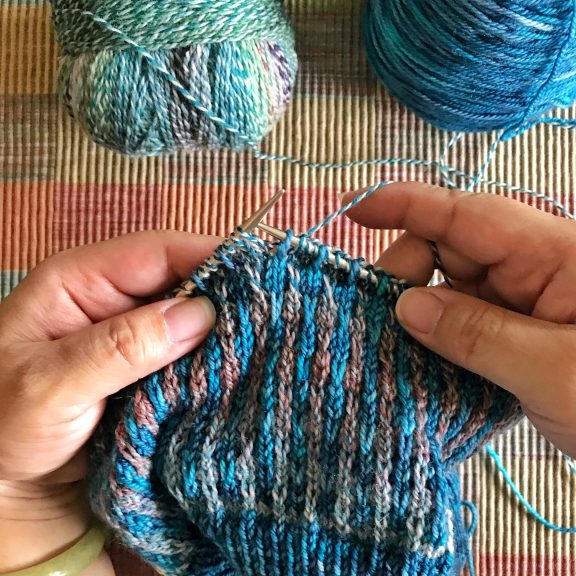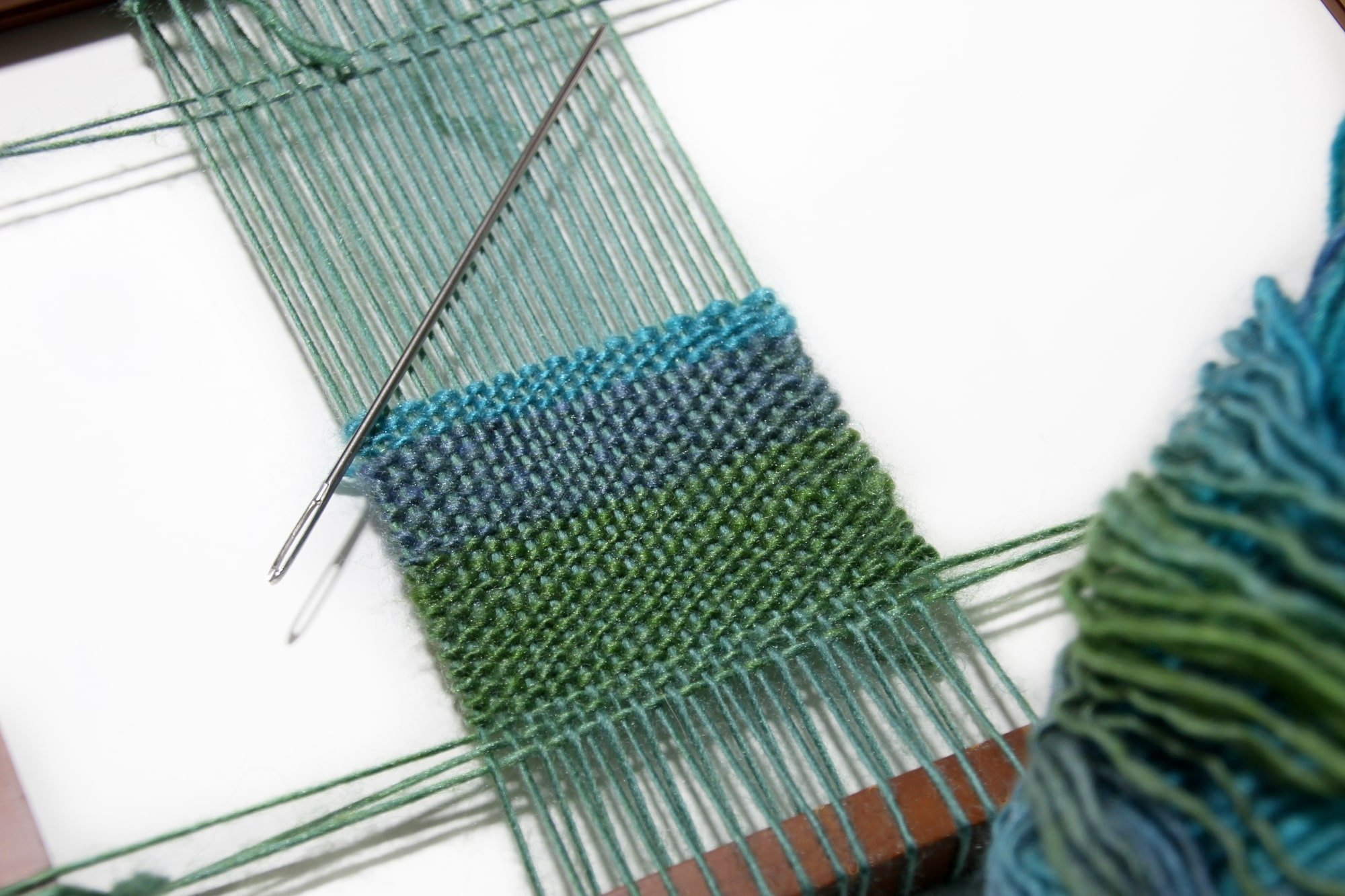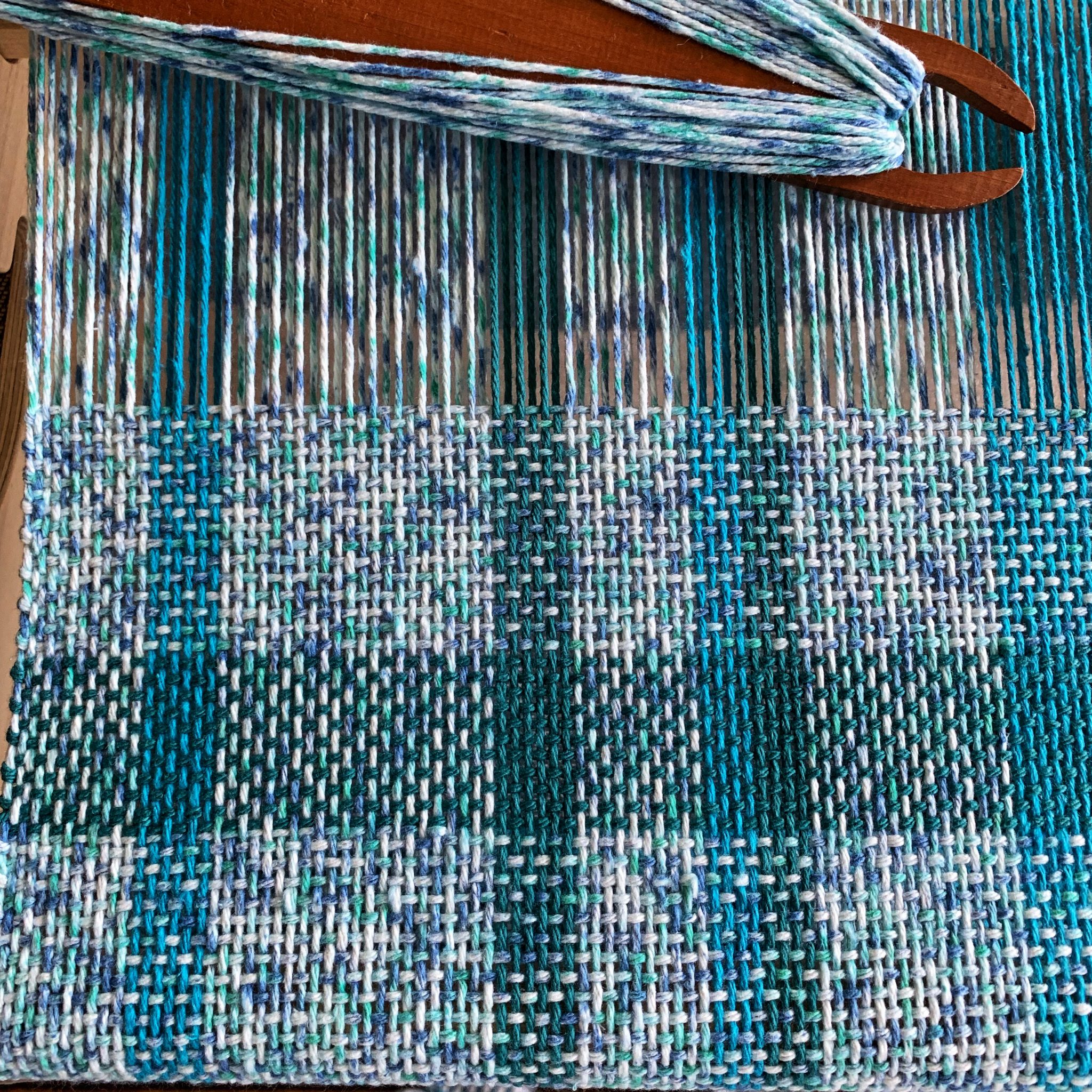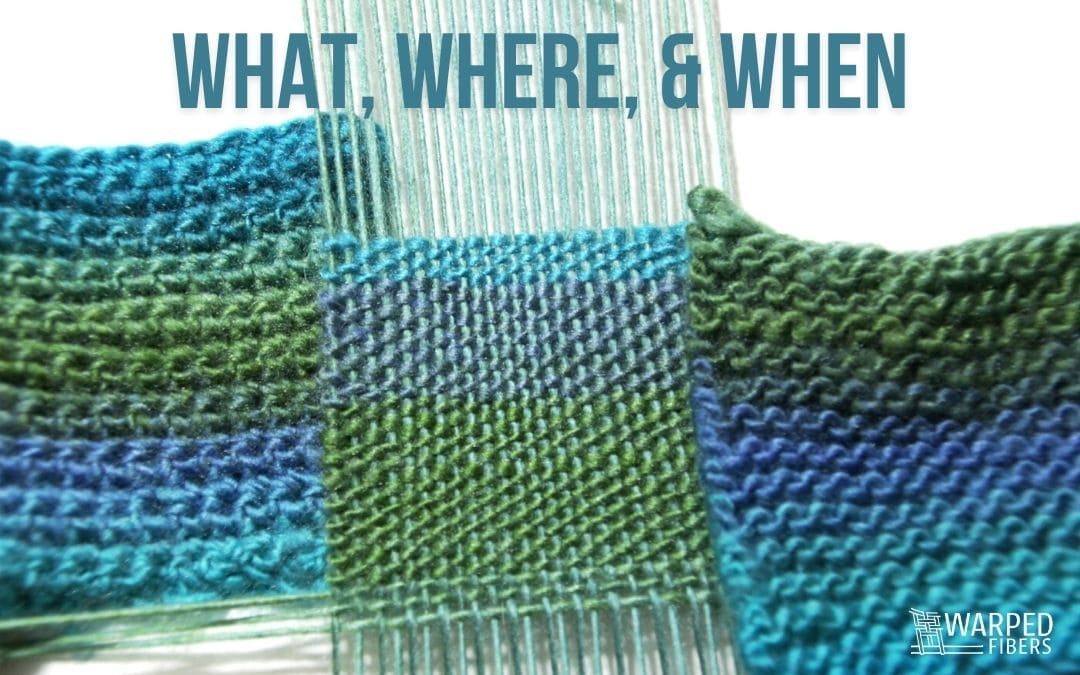Knitting Or Weaving - The longitudinal threads are called the warp and the lateral threads are the weft, woof, or filling. Tailored for crafters of all ages, the chunky blanket yarn is perfect for children, teenagers, adults, or seniors, taking their crafting skills to new heights. Web knitting and weaving are two common methods of creating textiles. Use this incredibly soft and fluffy yarn to achieve unique. Knitting produces a knitted fabric and weaving produces a woven fabric. April 4, 2012 by mazharul islam kiron. Variations in knit stitches and weave structures are made to produce different types of fabrics. When i first started textile design, i was curious about the differences between weaving and knitting. They will still work well as weft, since anything can be weft. Web what is weaving?
Weaving vs. Knitting The Knitting Circle
The warp yarns, or ends, run lengthwise in the fabric, and the filling threads. The method or process of interlacing two yarns of similar materials.
The Difference Between Weaving, Knitting, and Crochet Warped Fibers
Being a textile enthusiast, you should know the basic differences between weaving and knitting. The most common use for the technique is when working stranded.
How to weave in ends in knitting 10 easy techniques [+video]
You want your knitting to be as seamless and smooth as possible. These structural differences are one of the biggest ways that these 3 techniques.
What Is The Difference Between Knitting And Weaving?
When i first started textile design, i was curious about the differences between weaving and knitting. Knitting, weaving and crochet are similar in that they.
Weaving vs. Knitting The Knitting Circle
Web weaving is a method of textile production in which two distinct sets of yarns or threads are interlaced at right angles to form a.
How to weave in ends as you go and join yarn the easy way [+video]
Web weaving is a method of textile production in which two distinct sets of yarns or threads are interlaced at right angles to form a.
How to weave in ends in knitting 10 easy techniques [+video]
Knitting and weaving are two popular textile techniques that involve the interlacing of yarn or thread to create fabric. Other methods are knitting, crocheting, felting,.
Twist and weave a super neat way to join a new color in knitting
Woven fabric can usually be stretched in only one direction. Knitted fabric has more elasticity. Web the short answer is that knitting uses two different.
Difference between Knitting & Weaving. YouTube
Knitting, weaving and crochet are similar in that they are all ways to make cloth or form fabric. Web comparison between weaving and knitting. The.
Process, Tools, Technique, Yarns And Types Of Projects.
Web knitting and weaving are two common methods of creating textiles. 3· knitting requires smaller materials, like knitting needles. Jun 7, 2021 • 9 min read. Spinning is part of creating the yarn you use in knitting or weaving.
Being A Textile Enthusiast, You Should Know The Basic Differences Between Weaving And Knitting.
Web weaving is a method of textile production in which two distinct sets of yarns or threads are interlaced at right angles to form a fabric or cloth. Below, is a comparison between the knitting and weaving in five areas: Web in knitting, weaving is a family of techniques used for several purposes in knitting. Knitting, weaving and crochet are similar in that they are all ways to make cloth or form fabric.
Each Yarn Is Called Either A Warp (Vertical) Or A Weft (Horizontal), And They Are Interlaced At Right Angles To Make A Fabric Structure.
Of course, you want to keep your stitches from unraveling. Web knitting is a technique of producing fabric from a strand of yarn or wool. These structural differences are one of the biggest ways that these 3 techniques differ and are good (or not as good) at certain things. April 4, 2012 by mazharul islam kiron.
This Article Will Help You To Differentiate Between These Two Figures.
Web 1· rows of stitches in knitting are looped parallel to each other, while weaving involves threads interlaced perpendicularly. 2· knitted products are more elastic and bulkier, while woven products have more flow and are much thinner. Other methods are knitting, crocheting, felting, and braiding or plaiting. Web weaving with knitting yarn.


![How to weave in ends in knitting 10 easy techniques [+video]](https://nimble-needles.com/wp-content/uploads/2021/04/weaving-in-ends-garter-stitch-step-1.jpg)


![How to weave in ends as you go and join yarn the easy way [+video]](https://nimble-needles.com/wp-content/uploads/2021/08/a-swatch-join-new-yarn-weave-in-as-you-go.jpg)
![How to weave in ends in knitting 10 easy techniques [+video]](https://nimble-needles.com/wp-content/uploads/2021/04/colorwork-weave-in-stripes-knot-1024x684.jpg)


